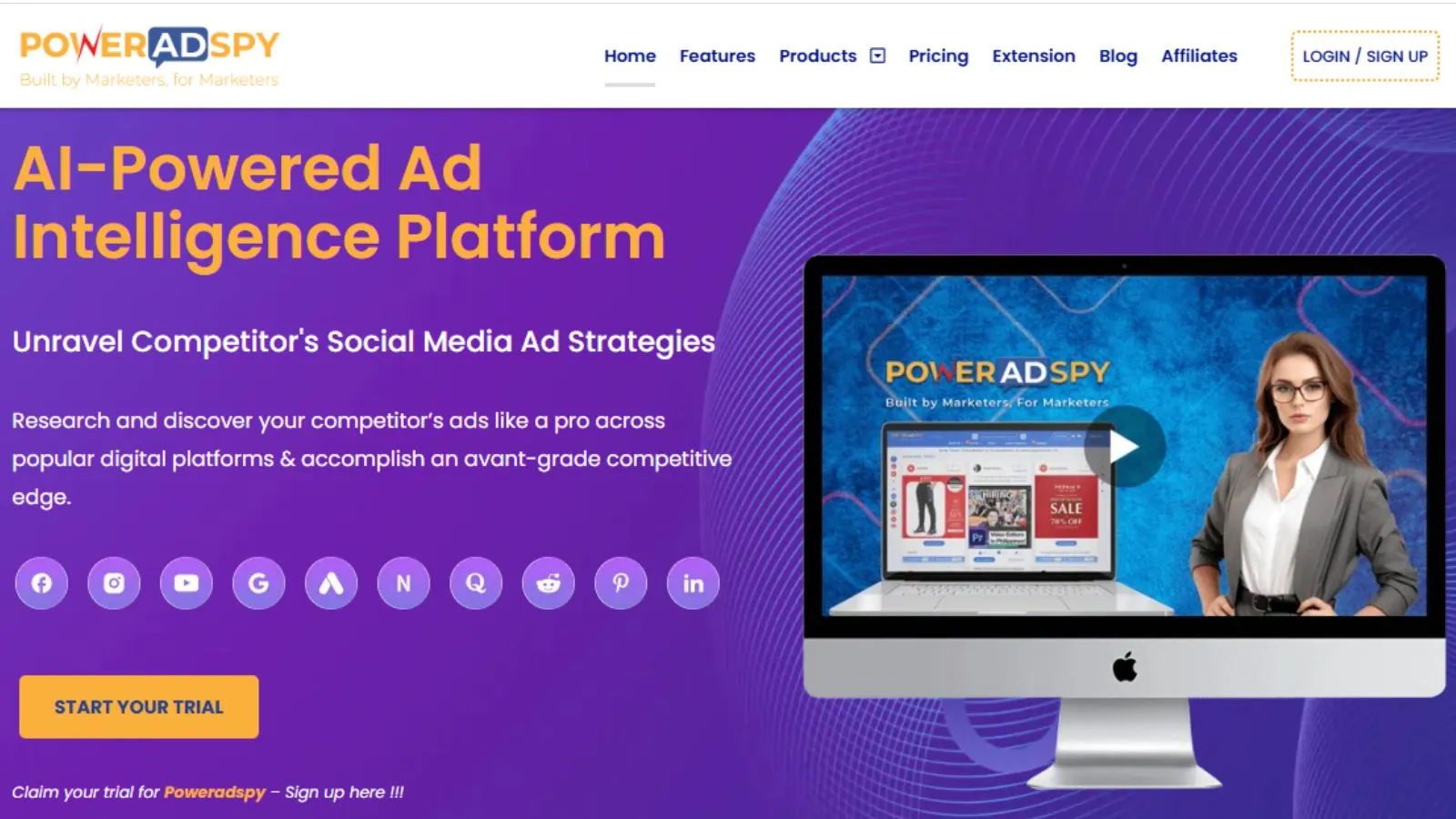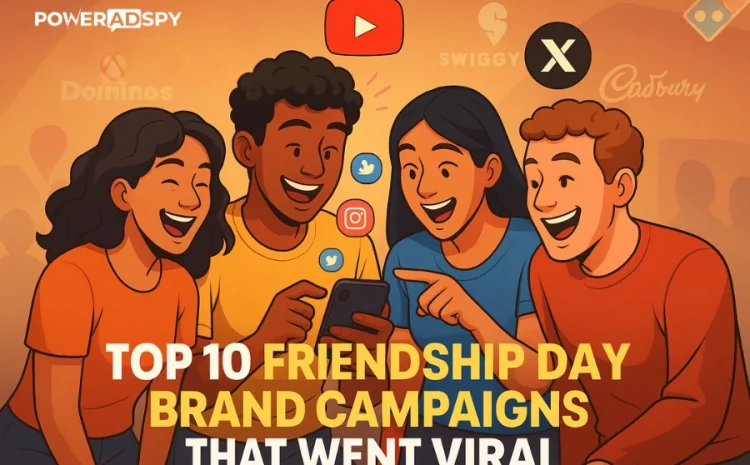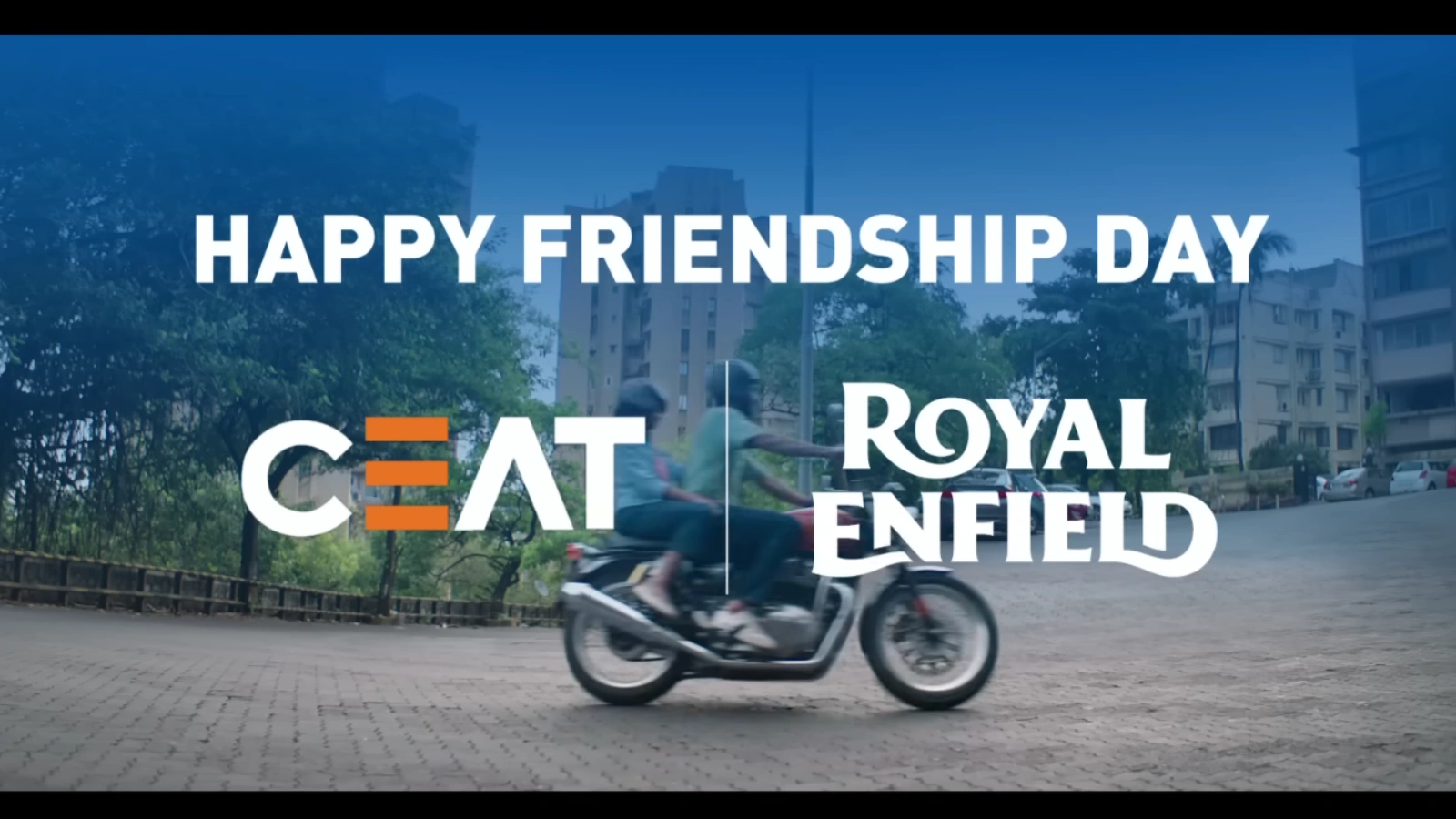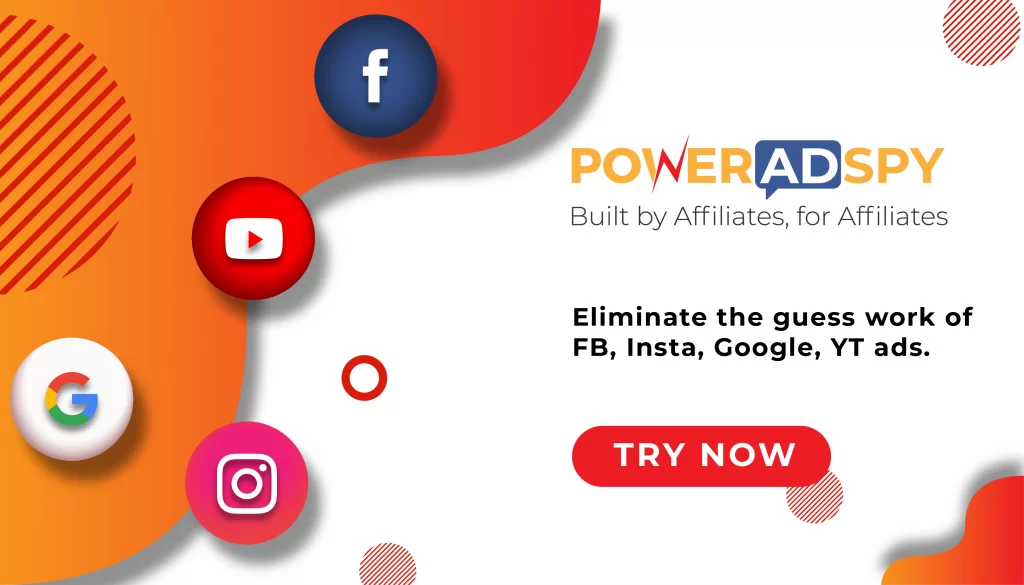Best Friendship Day Campaigns Used By Famous Brands
Friendship Day has become an opportunity for brands to connect with their audience in real time.
These are no longer just about sharing a generic post with a “Happy Friendship Day” caption.
Brands now use this day to tell stories and engage in conversations, all through creative social media marketing.
In this blog, we have selected the 10 most impactful Friendship Day Ads campaigns from top brands.
These campaigns were smart, engaging, and built for the platforms people use, like Instagram Reels, YouTube, and X (Twitter).
If you are a marketer, content creator, or business owner, this list will show you exactly what goes into a successful campaign and how to do it right.
Let’s dive in.
In a hurry? Listen to the blog instead!
1. Domino’s – “The Last Slice”
Domino’s took a simple idea – fighting over the last slice of pizza – and turned it into a powerful story about friendship. The ad shows two friends who are always arguing over that final slice, until one day, one of them surprises the other by saving it for him.
It is a small moment, but it hits hard because it’s so relatable. We have all been there – joking and bonding with our closest friends over food.
Why it worked:
- It focused on a real, everyday situation people connect with.
- The story was short, sweet, and emotional.
- Domino’s stayed true to its brand, and the pizza was still the hero.
- It worked well on video platforms like YouTube and Instagram Reels.
What marketers can learn:
- You don’t need a huge budget – just a smart idea that makes people feel something.
- Relatable storytelling beats hard-selling any day.
- The best social media ads are the ones people want to share.
2. Swiggy – “Roast Your Dost”
Swiggy took a bold and funny route with its Friendship Day campaign. Instead of going emotional, they encouraged people to roast their best friends and rewarded the funniest entries with discounts and goodies.
They ran the campaign on social media with a clear CTA: tag your friend, drop your roast, and join the fun. It tapped into a trend we all love, playful banter with our closest friends.
Why it worked:
- It was fun, interactive, and easy for users to join.
- Perfectly aligned with Gen Z and millennial humor.
- Boosted Swiggy’s engagement across Instagram and X (Twitter).
- User-generated content did the heavy lifting — the audience became the campaign.
What marketers can learn:
- Humor works, especially when it feels personal and shareable.
- A campaign does not always need a polished video; sometimes, good copy and timing are all you need.
- Letting users take part in the idea increases reach without extra ad spend.
Also Read!
Top 5 Thought Provoking Holiday Marketing Ideas Of The Year
9+ Powerful Direct Response Marketing Examples You Can Steal
3. Amazon miniTV – “Case Toh Banta Hai”
Amazon miniTV used Friendship Day to promote its comedy show “Case Toh Banta Hai,” but they did it smartly. Instead of just pushing the show, they created short, funny clips where friends were “put on trial” for classic friendship crimes, like not replying to texts or always being late.
The content was light, meme-worthy, and full of inside jokes that best friends could relate to. It felt like something you’d tag your friend in, and that’s exactly what people did.
Why it worked:
- Tied the Friendship Day theme directly into their original show, great brand synergy.
- Used short-form video to keep things mobile-friendly and binge-worthy.
- The humor felt fresh and on-trend, especially with meme culture.
- Encouraged tagging and sharing, which boosted organic reach.
What marketers can learn:
- You can promote a product and still be fun; the key is making it feel natural.
- Building content around small, everyday moments makes it more shareable.
- If your campaign ties into entertainment, lean into humor, and it travels fast.
4. Gillette Venus – “Drop Your Inhibitions”
Gillette Venus took a more meaningful and empowering approach to Friendship Day. Their campaign focused on how true friendship allows women to be themselves, without filters, fear, or judgment. The message was simple: real friends help you feel confident in your skin.
The brand used storytelling, real voices, and diverse representation to create a campaign that felt honest and inspiring. It was not flashy, it was real, and that’s what made it stand out.
Why it worked:
- Tapped into a deeper emotional space – self-confidence through friendship.
- Highlighted everyday women, not just influencers or celebrities.
- Strong alignment with Gillette Venus’s brand message: confidence, individuality, and comfort.
- Performed well on Instagram and YouTube, especially with young female audiences.
What marketers can learn:
- Emotional campaigns don’t have to be sad – they just have to be true.
- Showing real people makes a campaign more relatable and trustworthy.
- Friendship is not one-size-fits-all; tapping into different perspectives makes your message stronger.
5. Archies – “Har Rishtey Mein Dosti”
Archies used Friendship Day to share a simple but powerful message:
Friendship is not just between friends; it’s in every relationship.
The campaign showed moments between siblings, couples, and even parents, reminding people that friendship is at the heart of every strong bond. It was warm, emotional, and easy for anyone to connect with.
Why it worked:
- Expanded the idea of friendship beyond just friends.
- Emotionally driven, it felt real and personal.
- Matched Archie’s core brand (celebrating relationships).
- Shared widely on Facebook and WhatsApp, especially among families.
Marketing Takeaways:
- Relatable content that reflects real life often performs better than overly polished ads.
- Emotional storytelling works well across all age groups, not just Gen Z.
- Simple ideas, told well, create strong brand moments.
6. CEAT | Royal Enfield
Royal Enfield celebrated the bond between rider friends with a campaign built around trust, loyalty, and the open road. The ad showed two bikers on a road trip — where one looks out for the other without saying a word. No lines. Just strong actions.
It perfectly captured the unspoken understanding many close friends share — especially those who travel or ride together.
Why it worked:
- Spoke directly to Royal Enfield’s community of loyal riders.
- Focused on action, not over-the-top drama.
- Strong visuals + music made it feel cinematic.
- The brand didn’t push products — it pushed emotion.
Marketing Takeaways:
- Know your audience deeply — speak their language.
- Use lifestyle moments to tell your brand story.
- Sometimes, less is more — powerful visuals can say it all.
7. Tinder India – “Swipe Right on Real Bonds”
Tinder flipped the usual dating app story for Friendship Day.
Instead of focusing on romance, the brand celebrated real friendships that start on the app. They shared stories of people who met through Tinder and ended up building strong platonic relationships.
It was unexpected, refreshing, and showed that Tinder is not just about dating, it’s also about genuine human connections.
Why it worked:
- Changed the narrative in a bold, positive way.
- Real user stories made the campaign feel authentic.
- Connected emotionally with people who value modern friendships.
- Helped Tinder stand out from typical Friendship Day ads.
Marketing Takeaways:
- Don’t be afraid to challenge your brand perception; it can open new doors.
- User stories are powerful — let real people do the talking.
- Friendship Day is a chance to show the softer side of your brand.
8. Cadbury – “Every Sweet Moment is Friendship”
Cadbury went back to its roots: emotion, simplicity, and shared joy. Their Friendship Day campaign showed how small, sweet moments between friends can mean just as much as big gestures. Whether it is sharing chocolate, checking in, or just being there, the ad focused on the little things that build strong bonds.
It was not flashy. No influencers. No trending hashtags. Just a beautifully shot ad that made people feel something.
Why it worked:
- Played to Cadbury’s strength — emotional storytelling.
- Focused on everyday friendship moments we all relate to.
- Reinforced the idea that Cadbury = sharing and care.
- Performed well across TV, YouTube, and Instagram.
Marketing Takeaways:
- You don’t need viral tricks, just tell a good story.
- Stay true to your brand identity. Cadbury always owns “emotional + sweet.”
- Small, simple acts of friendship are easier to connect with than over-the-top stories.
9. boAt – “Plug Into Your People”
boAt used Friendship Day to highlight the connection between music and friendships. Their campaign focused on how sharing playlists, listening to songs together, or just vibing to the same beat can bring friends closer.
The brand featured short, energetic visuals of real-life moments, friends on a road trip, chilling at home, or working out together, all while using boAt products. It was fast, fun, and full of youth culture energy.
Why it worked:
- Spoke directly to Gen Z and young millennials.
- Used music as the emotional connector, which fits their brand perfectly.
- Showcased their product without being too salesy.
- Optimized for Reels and short-form content.
Marketing Takeaways:
- Lean into your audience’s lifestyle, boAt knows its market.
- Music + friendship = powerful emotional combo.
- Friendship Day content doesn’t always have to be deep; it can be upbeat and fun too.
10. Zomato – “Meme Banter Over Ads”
Zomato did not run a traditional ad for Friendship Day, and honestly, they did not need to. Instead, they did what they do best: meme banter and savage tweets. On Friendship Day, Zomato dropped witty posts teasing other food brands, shared inside jokes about friend groups, and played into the humor people already love them for.
The content felt casual, fun, and super shareable, just like a conversation between friends.
Why it worked:
- Zero budget, high engagement, pure meme marketing magic.
- Stayed true to Zomato’s brand voice: witty, quirky, and fun.
- Encouraged reposts, tags, and replies, all organic.
- Kept things simple and native to platforms like X (Twitter) and Instagram.
Marketing Takeaways:
- You don’t always need a big-budget campaign. Personality goes a long way.
- Consistency in brand voice builds loyalty over time.
- Meme marketing, when done right, can outperform traditional ads.
From emotion to memes, every brand took a different route, but they all proved one thing: friendship connects, and great storytelling makes it unforgettable.
How To Launch Your Own Creative Friendship Day Campaign

Planning a powerful Friendship Day campaign is easier when you know what your competitors are doing.
But how?
There is a tool called PowerAdSpy that lets you spy on over tens of millions of ads across major platforms like Facebook, Instagram, YouTube, Google, and more…
PowerAdSpy is an ad intelligence tool that helps you see what kind of ads your competitors are running across platforms like Facebook and Instagram. You can search by keyword, brand name, or even domain to find top-performing ads, see the ad copy, visuals, engagement, and even targeting info.
Here’s how to use it step-by-step:
- Search ads by keyword or brand to see what campaigns your competitors are running.
- Filter results by platform, location, ad type, or audience to find what fits your niche.
- Check ad creatives, copy, and engagement to understand what’s working.
- See targeting details like location, gender, and device type to refine your strategy.
- Spot high-performing formats like Reels, memes, or carousels to guide your content style.
- Plan your timing, CTAs, and hashtags based on what’s driving the most interaction.
By using the tools, you get a look into what’s working in real campaigns, giving you an idea of building your own Friendship Day content.
Conclusion
Friendship Day has become more than just a day for greetings; it’s a real opportunity for brands to connect with people through creative social media ads that tell a story or make people feel something.
The campaigns we covered showed how powerful creative social media advertising can be when done right. From emotional storytelling to funny, relatable moments, these brands used different styles but shared one goal: making their message stick.
If you are planning your campaign, learn from what worked. Use tools like PowerAdSpy to see what your competitors are doing, get new ideas, and build a campaign that truly connects with your audience.
Because today, the best ads don’t just promote, they build real connections.
FAQs
1. When is the best time to launch a Friendship Day campaign?
Ideally, start teasing your campaign 3–5 days before Friendship Day to build anticipation. Peak engagement usually happens a day before and on the day itself.
2. Do Friendship Day campaigns work for small businesses?
Yes, absolutely. You don’t need a big budget — just a relatable idea, good visuals, and a clear call to action. Even a single reel or UGC contest can drive great engagement.
3. What platforms work best for Friendship Day promotions?
Instagram (especially Reels), YouTube Shorts, and X (Twitter) tend to perform best. LinkedIn can also work well for B2B brands if the messaging is professional and creative.
4. Should I use influencers in my Friendship Day campaign?
If it fits your budget and brand, yes — but focus on micro-influencers who have strong engagement and a loyal niche audience. Friendships shared by real people feel more authentic.












